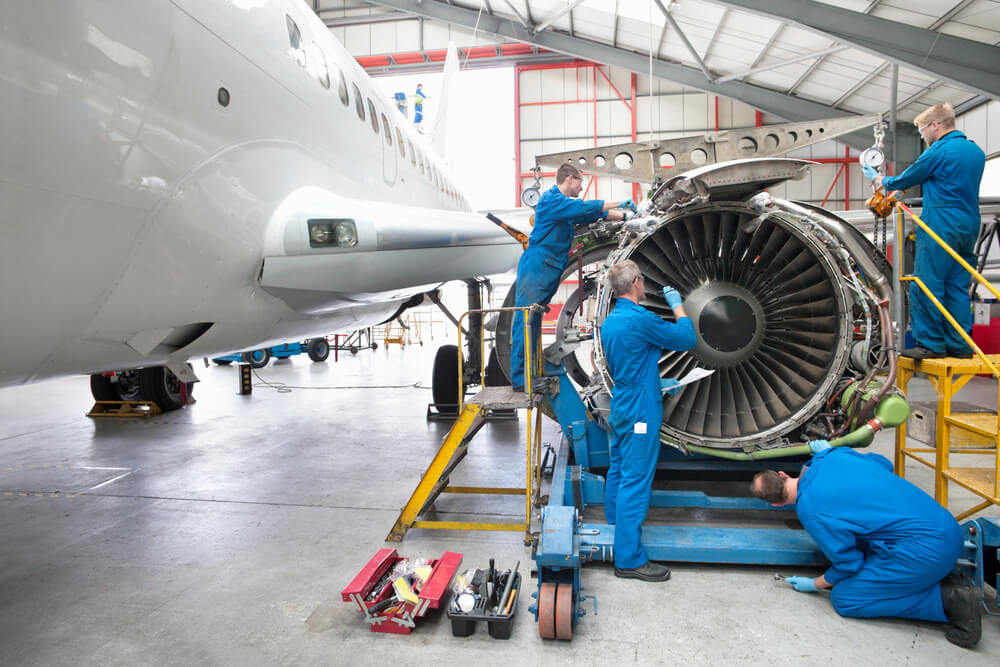Prior to COVID-19, the aviation industry was already facing a shortage of aviation maintenance technicians. While this staffing issue has been evident in the global Maintenance, Repair, and Operations (MRO) sector for several years, the supply of qualified specialists failed to increase to meet demand. But has the global pandemic altered the situation?
Why is there a shortage of aviation mechanics?
Not all aviation problems are new. Even before the economic downturn caused by COVID-19, commercial aviation was set to experience a lack of qualified technicians. Over the last few years, the amount of new licenses and certificates issued suggests that there has been a lull in the number of personnel entering the industry.
According to the Commercial MRO Maintenance Technician Labor Model, which was created by American management consulting firm, Oliver Wyman, the retirement and attrition of existing technicians can be cited as one of the main reasons for the shortage of qualified maintenance staff.
For instance, the median age of MRO technicians in the United States is 51 years old, which is almost a decade older than the national average. The data shows that by 2034, approximately half of the 67,910 aircraft mechanics currently employed in the US are predicted to retire. This, with a few minor exceptions, also applies to the global MRO industry where, depending on the region, the average age of mechanics and technicians is 41 years old.
This trend suggests that the lack of new technicians is compounded by an estimated surge in retirement. In short, more people are retiring than entering the field. Experts also suggest that a significant number of experienced technicians currently in service are set to retire within the next 10 to 15 years, while many new technicians will still be in the initial stages of their certification.
Additionally, preparing new technicians is a huge investment in time. For instance, depending on the path a person decides to take, it could take five to six years to graduate, gain the required hours of practical training and become a certified aircraft mechanic with either an airframe (A) or power plant (P) rating, or even both to become an A and P mechanic.
Oliver Wyman anticipates that by the time the current highly experienced professionals are set to retire, a new generation of technicians will not be certified in time.
At the current rate, the demand for MRO professionals will exceed the supply of mechanics and technicians by 2023.
The impact of COVID-19
As a result of the COVID-19 pandemic, airlines across the world were forced to ground entire fleets and many MRO professionals lost their jobs.
However, improper or incomplete maintenance could lead to corrosion, damaged wires, and various other issues, which can eventually lead to more extensive and expensive aircraft repairs in the future. So, the need for parked fleets to undergo continued maintenance has mitigated the impact on technician employment.
Soon, companies began to realize that grounded planes still require maintenance in order to remain airworthy. MRO companies understand that when the pandemic eventually subsides, there will be an increase in demand for MRO services and so, some businesses secured their experienced technicians despite staffing costs. In comparison, other companies opted for a cost-cutting strategy, choosing to let go of hundreds of technicians, which left a gaping hole in the aircraft maintenance sector.
As for new generation aircraft maintenance specialists, a quarter of all FAA-certified aviation maintenance technician schools in the US have suspended operations entirely. Due to COVID-19, half of the remaining aircraft mechanic schools have decreased graduations by 25% and, by 2020, there was a 28% decline in new enrollment. To rectify the situation, some US schools added online learning options and launched non-traditional instruction platforms, including virtual training.
The long-term outlook for these alternative platforms is quite positive with some of the regulatory exemptions issued by aviation regulators during the pandemic evolving to become industry standards. But there are short-term problems, including losing the hands-on teaching experience, which is crucial when learning to repair and maintain an aircraft. As a result, certain schools in the US decided to delay graduation until students could complete practical assignments, which further exacerbates the issue of replacing retired mechanics with new technicians.
So, just how many technicians will be needed post-pandemic?
American aerospace manufacturer, Boeing, estimates that as soon as aircraft are removed from storage, thousands of hours of labor will be required to ensure proper aircraft maintenance has been performed and that all parts are in working condition, ensuring airplanes are airworthy. Completing these tasks will require the expertise of skilled maintenance technicians.
Boeing’s updated 2020-2039 Outlook indicates that, despite the pandemic and based on potential fleet growth, aircraft utilization, attrition rates, and regional differences in crewing specific to aircraft type, the MRO market will need approximately 790,000 new maintenance technicians.
Many furloughed technicians have gained employment in government, business, and the general aviation sector. But Boeing forecasts that an increase in commercial air traffic demand set to take place over the next few years will allow MRO professionals to return to positions created by the retirement of an older workforce and potential fleet growth.
Boeing also reports that the greatest technician shortage will be felt in the Asia Pacific and North American regions. The manufacturer surmised that within a decade, Asia Pacific will require around 253,000 MRO specialists, while North America will need up to 192,000 new mechanics. In Europe alone, airlines will probably require 140,000. However, the Middle East will face a shortage of 63,000 experienced maintenance professionals.
Looking at Latin America, it is estimated that air carriers will need approximately 46,000 aircraft mechanics by 2039. It is also predicted that Africa and Central Asia will lack 23,000 and 22,000 skilled aircraft maintenance employees respectively.

